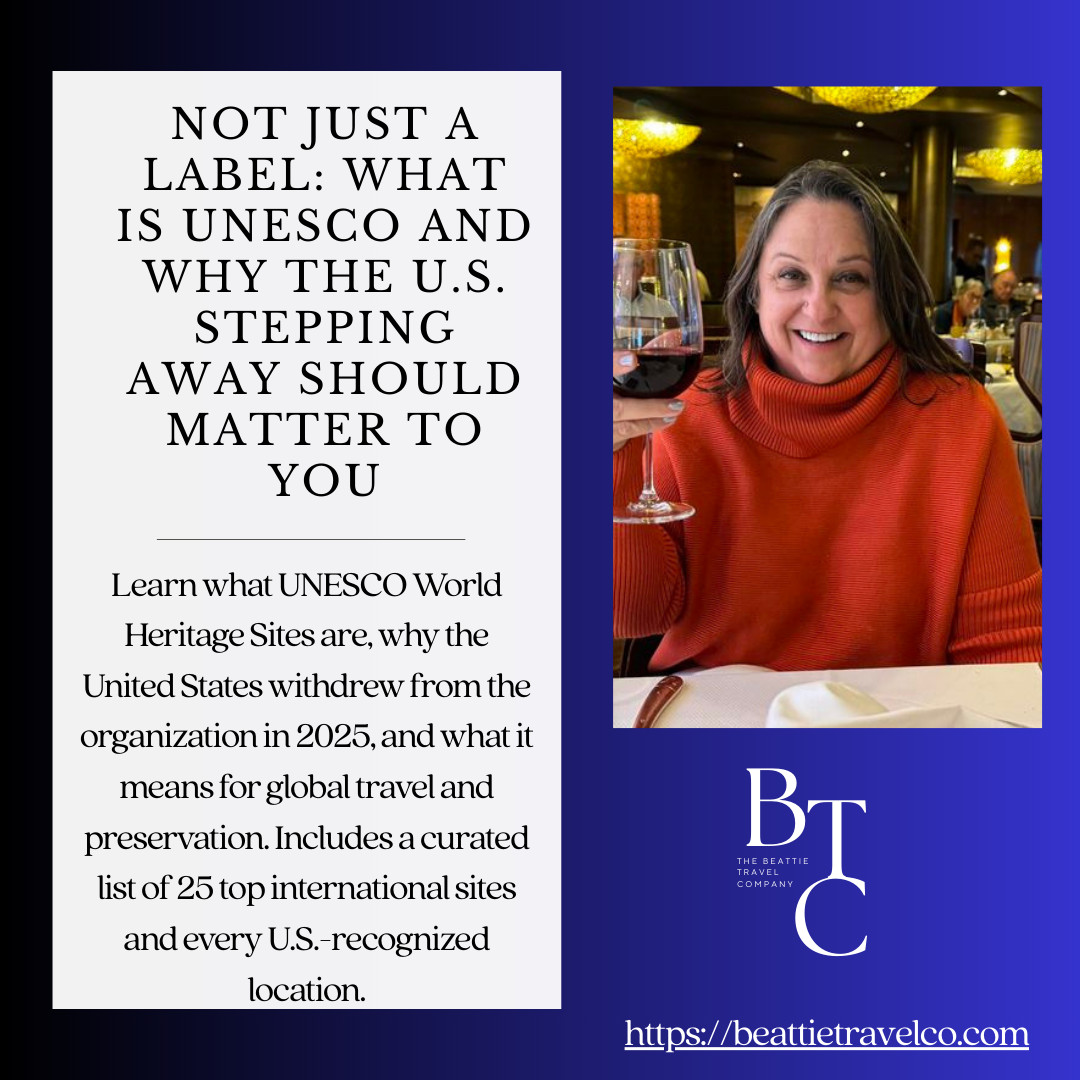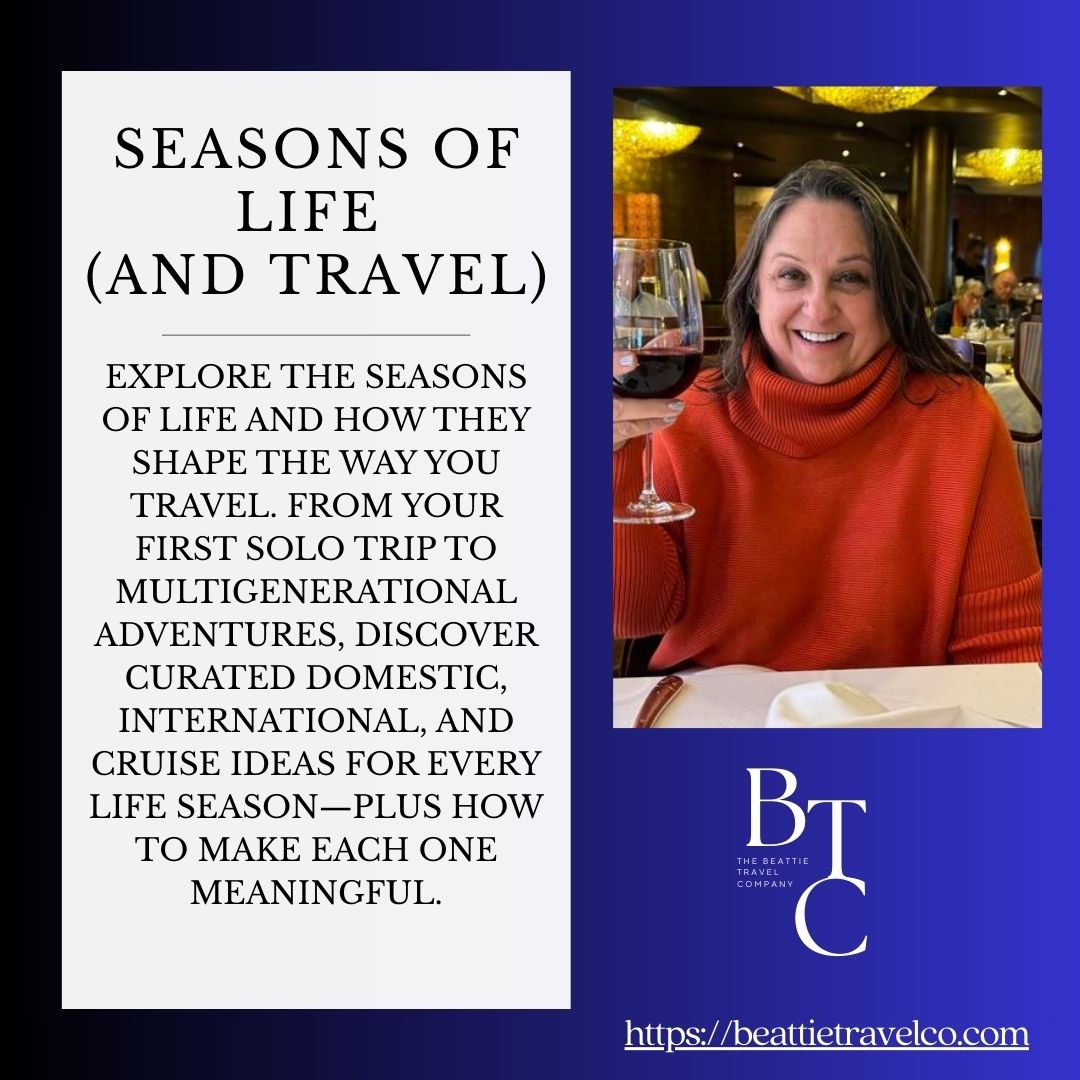
There are places in this world that feel like breath held still. They carry the weight of centuries, the echo of prayers, the pulse of nature untouched by time. Some are so extraordinary, they’re recognized not just by locals or tourists but by a global community. That list, the one that reads like a passport through wonder, is curated by UNESCO.
Right now, the United States is choosing to walk away from that conversation. Again.
This isn’t just a policy decision tucked into a government press release. It’s a reflection of what we value, how we see the world, and whether we believe our stories are better told together.
What Is UNESCO, Exactly?
UNESCO stands for the United Nations Educational, Scientific and Cultural Organization. It was founded in 1945, in the fragile quiet after World War II, with a mission to build peace through education, science, and cultural collaboration.
Its best-known program is the World Heritage List, a registry of places that matter deeply: culturally, historically, and environmentally. These aren’t just postcard-perfect locations. They are sacred landscapes, architectural marvels, and ecosystems of astonishing biodiversity. Being named a UNESCO World Heritage Site means protection, global visibility, funding, and access to the world’s best preservation experts.
It means the world has agreed that this place holds something precious and worth saving.
Why Is the U.S. Leaving?
In July 2025, the United States announced it would again withdraw from UNESCO. The stated reasons include disagreements over what some have labeled a globalist agenda, with specific resistance to inclusion and diversity efforts.
While this isn’t the first time the U.S. has pulled away from the organization, this most recent decision lands differently. It signals a deeper shift: a prioritization of insular, national interests over shared cultural stewardship.
The message is clear. Global cooperation is optional. And protecting what belongs to everyone is suddenly viewed as political instead of essential.
Why This Should Matter to You
If you’ve ever stood in awe beneath the ceiling of the Sistine Chapel, walked the ruins of Machu Picchu, or imagined the grandeur of Petra, then this touches you.
UNESCO sites are often the places that first ignite a desire to travel. They are the backdrop of our bucket lists, the pages of our coffee table books, and the dreams we tuck into journals.
To pull away from UNESCO is to say we want to enjoy the beauty without investing in its survival. It is accepting the benefits of visibility while refusing the responsibility of preservation.
That isn’t just shortsighted. It steps away from what makes travel meaningful. It pulls us out of connection, out of awareness, and away from the humbling experience of standing in the presence of something much older and larger than ourselves.
What Does the U.S. Lose in the Process?
When we remove ourselves from UNESCO, we forfeit our right to vote on new site designations. We silence our voice in conversations about global preservation. We limit access to joint research, expert guidance, and rapid response initiatives that protect endangered sites.
While the World Heritage Sites within the United States will still be recognized, our lack of participation speaks volumes. It says we are willing to reap the recognition but not to show up for the work.
In a world where collaboration is key to solving big problems—climate change, mass tourism, war, environmental erosion—this kind of withdrawal doesn’t just weaken influence. It chips away at integrity.
This Is Not Just Political. It’s Personal.
For travelers, artists, historians, teachers, and storytellers, this move cuts deep. Cultural preservation is not a niche concern. It is a legacy we choose to protect or ignore.
Travel is not just movement. It is meaning. And when the United States steps away from the world’s most respected cultural organization, we are not simply pulling a chair from the table. We are pulling the rug out from under future generations who deserve to see what came before them.
25 Must-See UNESCO World Heritage Sites Around the World
- Machu Picchu, Peru
- Great Barrier Reef, Australia
- Taj Mahal, India
- Galápagos Islands, Ecuador
- Petra, Jordan
- Angkor Wat, Cambodia
- Acropolis of Athens, Greece
- Stonehenge, United Kingdom
- Historic Centre of Florence, Italy
- Old City of Jerusalem
- Serengeti National Park, Tanzania
- Great Wall of China
- Mont-Saint-Michel, France
- Chichen Itza, Mexico
- Venice and its Lagoon, Italy
- Iguazu National Park, Argentina and Brazil
- Historic Centre of Bruges, Belgium
- Old Havana, Cuba
- Auschwitz Birkenau, Poland
- Ancient City of Sigiriya, Sri Lanka
- Ha Long Bay, Vietnam
- Old Town of Lijiang, China
- Historic Centre of Prague, Czech Republic
- Rapa Nui National Park, Chile
- Ilulissat Icefjord, Greenland
UNESCO World Heritage Sites in the United States
- Mesa Verde National Park, Colorado
- Yellowstone National Park, Wyoming, Montana, and Idaho
- Grand Canyon National Park, Arizona
- Everglades National Park, Florida
- Independence Hall, Pennsylvania
- Redwood National and State Parks, California
- Mammoth Cave National Park, Kentucky
- Statue of Liberty, New York
- Cahokia Mounds, Illinois
- Chaco Culture, New Mexico
- Kluane/Wrangell–St. Elias/Glacier Bay/Tatshenshini-Alsek, shared with Canada
- La Fortaleza and San Juan National Historic Site, Puerto Rico
- Great Smoky Mountains National Park, North Carolina and Tennessee
- Olympic National Park, Washington
- Taos Pueblo, New Mexico
- Monticello and the University of Virginia, Virginia
- Hawaii Volcanoes National Park, Hawaii
- Carlsbad Caverns National Park, New Mexico
- Waterton–Glacier International Peace Park, shared with Canada
- Papahānaumokuākea Marine National Monument, Hawaii
- Monumental Earthworks of Poverty Point, Louisiana
- San Antonio Missions, Texas
- Frank Lloyd Wright’s Architectural Works
- Hopewell Ceremonial Earthworks, Ohio
- Wright Brothers National Memorial, North Carolina
- Moravian Church Settlements in Bethlehem, Pennsylvania













0 Comments